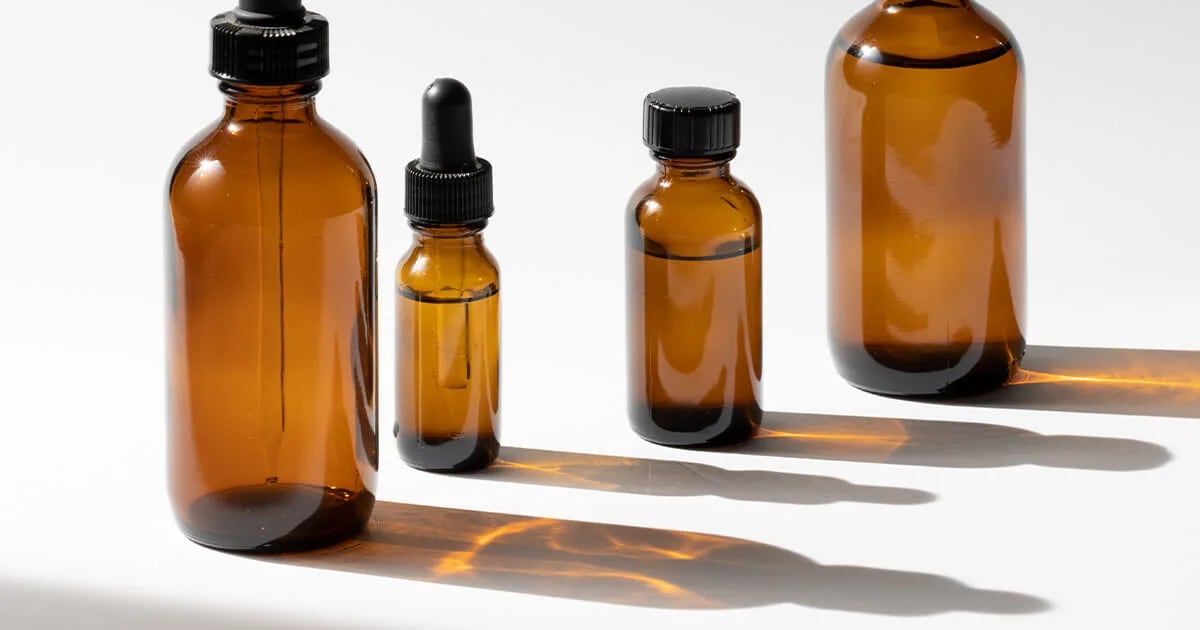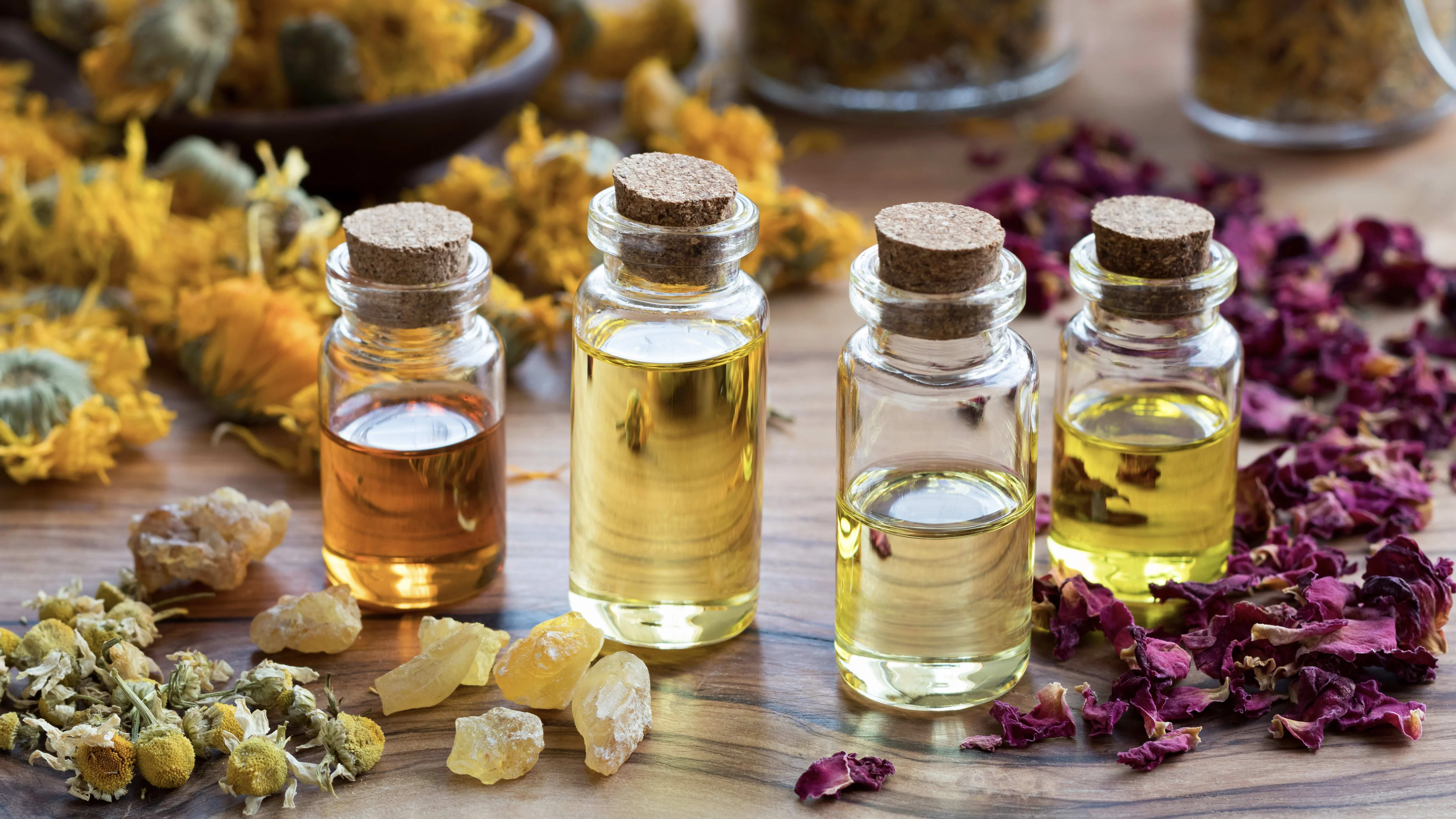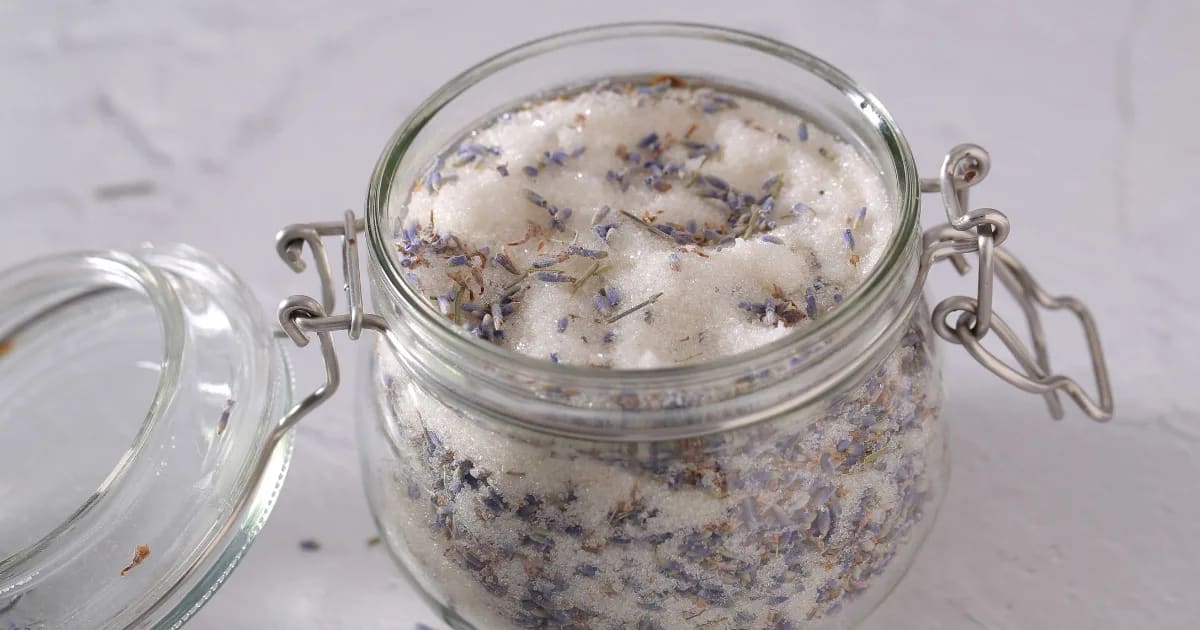Can essential oils calm swelling?

Can essential oils calm swelling?
Depending on the oils you use, yes, they can help!
Grapefruit is one of my favorite essential oils to calm swelling.
Grapefruit oil helps usher out stagnant, blocked energy, bringing more circulation through the swollen, puffy area. It allows fluids to move easily. This is largely due to its main component, d-limonene.
How d-limonene helps calm swelling
One way d-limonene helps calm swelling is by inhibiting something called “5-lipoxygenase.” (No need to pronounce it correctly! I’ll just call it “5-LOX” from now on.) All you need to know is that 5-LOX contributes to the body’s inflammatory response. Studies show that d-limonene reduces the presence of 5-LOX, which also calms swollen, puffy areas.
And d-limonene is just one supportive component present in Grapefruit essential oil!
Grapefruit is great at getting the body’s fluids moving. I even love it for lymph massage, and for encouraging the detox process after a night out with friends.
This recipe includes Grapefruit and three other essential oils that help calm swelling.
Feeling Swell Oil with Grapefruit
Grapefruit is great at getting the body’s fluids moving to help calm swelling.
Ingredients
1 fl oz (30 ml) Arnica Infused Olive Oil (Arnica cordifolia)
7 drops Lavender Oil (Lavandula angustifolia)
5 drops Grapefruit Oil (Citrus paradisi)
3 drops Geranium Oil (Pelargonium graveolens var roseum)
1 drop Cinnamon Leaf Oil (Cinnamomum zeylanicum)
Equipment
One 1 oz (30ml) Glass bottle
Directions
Combine the arnica-infused olive oil and the essential oils in the bottle.
Close the cap and shake well.
Gently massage puffy areas as long as the swelling persists, but don’t use this blend over a long term. The presence of potent Cinnamon Leaf oil means it’s best used for a short period of time.
*** PLEASE TAKE NOTE ***
We’re using Cinnamon LEAF oil, NOT Cinnamon BARK. The two share the same Latin name, but they contain different components. Cinnamon Bark has more safety concerns, and could be too irritating in a topical blend like this. Make sure your essential oil comes from the LEAVES of the Cinnamon tree, not the bark.
Let’s discuss why I included the other three oils in this recipe.
 Lavender essential oil (Lavandula angustifolia)
Lavender essential oil (Lavandula angustifolia)
Lavender is a classic essential oil for soothing any kind of pain and swelling.
Numerous studies have been done on its main components, linalool and linalyl acetate, so we know they’re excellent at easing pain and restoring the body to a comfortable, healthy state of homeostasis.
 Geranium essential oil (Pelargonium graveolens var roseum)
Geranium essential oil (Pelargonium graveolens var roseum)
Geranium is another one of my favorite oils for any kind of stagnant, blocked energy in the body. It contains the components citronellol and geraniol, which help calm swelling.
I especially love pairing Geranium with Grapefruit, since their benefits so beautifully complement one another.
 Cinnamon Leaf essential oil (Cinnamomum zeylanicum)
Cinnamon Leaf essential oil (Cinnamomum zeylanicum)
If you’ve been reading The Aromahead Blog for the past few weeks (or our educational email series, Aromahead Weekly!), you’ve heard me talk about Cinnamon Leaf!
Do you remember its primary component—the molecule that makes it so calming for swelling?
It’s eugenol!
While eugenol is amazing at soothing pain and inflammation, it’s super potent and comes with some significant safety precautions. Less is more with Cinnamon Leaf oil! (And remember—we’re using the oil from the leaf, NOT Cinnamon bark.)
Safety notes!
This blend is for short-term use only! Avoid using it for babies or children, or if you have sensitive skin, a weak liver, a blood clotting disorder, or if you’re on anticoagulant medication.
You can side-step these safety issues by leaving the Cinnamon Leaf oil out of this recipe.
Also, be sure you stick with the recommended drop count for Grapefruit in this recipe. Grapefruit is a phototoxic oil, meaning it can cause skin reactions in sunlight. At this low drop count, Grapefruit is safe. Learn more about phototoxic citrus oils!
FREE TRAINING!
Unlock the Power of Essential Oils!
Dive deeper into the complex and nuanced world of essential oils! You’ll learn foundational EO strategies you can use right away, get a clear understanding of where you are in your essential oil journey, and discover a proven path toward greater confidence, credibility, and opportunity through aromatherapy certification!
REFERENCES
Barboza, J. N., da Silva Maia Bezerra Filho, C., Silva, R. O., Medeiros, J., & de Sousa, D. P. (2018). An Overview on the Anti-inflammatory Potential and Antioxidant Profile of Eugenol. Oxidative medicine and cellular longevity, 2018, 3957262. doi.org/10.1155/2018/3957262
Baylac, S. and Racine, P. (2003) Inhibition of 5-lipoxygenase by essential oils and other natural fragrant extracts. International Journal of Aromatherapy 13, 2/3, 138-142.
Boukhatem MN, Kameli A, Ferhat MA, Saidi F, Mekarnia M. Rose geranium essential oil as a source of new and safe anti-inflammatory drugs. Libyan J Med. 2013 Oct 7;8:22520. doi: 10.3402/ljm.v8i0.22520. PMID: 24103319; PMCID: PMC3793238.
Hirota, R., Roger, N.N., Nakamura, H., Song, H.-S., Sawamura, M., and Suganuma, N. (2010) Anti-inflammatory effects of limonene from yuzu (Citrus junos Tanaka) essential oil on eosinophils. Journal of Food Science 75, 87-92.
Peanna, A.T., D’Aquila, P.S., Panin, F., Serra, G., Pippia, P. and Moretti, M.D. (2002) Anti-inflammatory activity of linalool and linalyl acetate constituents of essential oils. Phytomedicine 9, 721-726.
Su, Y.W., Chao, S.H., Lee, M.H., Ou, T.Y. and Tsai, Y.C. (2010) Inhibitory effects of citronellol and geraniol on nitric oxide and prostaglandin E2 production in macrophages. Planta Medica 76, 1666-1671.





